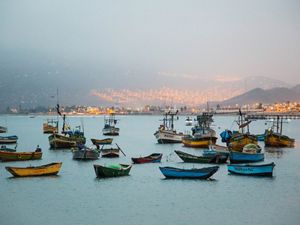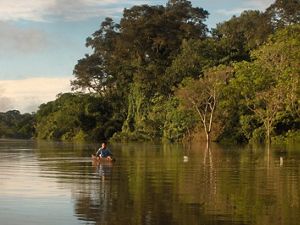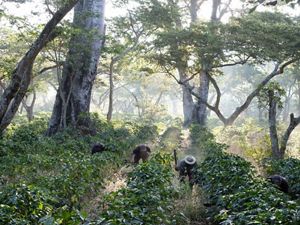The fund finances the stabilization of slopes, lagoon recovery and reforestation in the watersheds.
Water is essential for life on Earth. It is also crucial to social and economic development. Rising demand for water and greater inconsistency in its availability and quality due to climate change and degradation of natural areas are only a few of the threats to water security. Global water consumption is doubling every 20 years, and by 2025, at least two-thirds of the world’s population will likely be living in water stressed areas. Cities are most at risk: currently one in four is water-stressed.
The Nature Conservancy (TNC) has undertaken an ambitious initiative that relies on nature to secure clean water supplies for Latin America’s most at-risk cities. The project is based on Water Funds, innovative financial mechanisms that harness private and public investments to help protect and restore forests and ecosystems in upstream watersheds that supply cities and economies downstream. Up to 100 million Latin Americans will benefit by 2025. TNC has three Water Funds at different stages of development in the most at-risk cities in Peru: Lima, Piura and Cusco.
Lima Water Fund
Nature provides incredible benefits to our communities. River floodplains provide nutrient-rich soil for agriculture; our forests absorb carbon, clean our air, and filter our water; and coastal wetlands can protect cities from flooding during violent storm surges. The concept that nature can help secure and protect water for major cities is becoming more mainstream and many governments are beginning to embrace it. The government of Peru has done just that and passed two pieces of legislation to establish a first-of-its-kind, self-sustaining mechanism to fund water source protection throughout the country.
The 2013 Sanitation Services Modernization law, driven by the Ministry of Housing Construction and Sanitation, established an environmental compensation mechanism linked to watershed management and planning. Then in 2014, the Ministry of the Environment led the way for the Mechanisms for Ecosystem Services Compensation law and promoted the involvement of public and private sectors in the conservation of ecosystem services. The latter refers to benefits nature provides to human well-being.
With the new regulation framework in place, The Nature Conservancy (TNC) could work with the Peruvian Water Regulatory Authority (SUNASS in Spanish) to develop a new tariff structure to include environmental criteria. The new structure was approved for the city of Lima’s water utility (SEDAPAL) in 2015, requiring utilities to invest in ecosystem services, green infrastructure and climate change adaptation. Additionally, the new framework created a reserve fund of one percent of revenue to invest in natural infrastructure, and over three and a half percent to invest in climate change adaptation. Over the next five years, the tariff structure has the potential to direct an estimated $25 million toward natural infrastructure.
These developments will allow Aquafondo, the Water Fund created to protect Lima’s water supply, to play a key role. Lima is the largest city in Peru, and the country’s capital. The city gets only only 9 millimeters (approximately 0.354 inches) of rain a year and water scarcity is one of the main environmental conditions that has accompanied the growth of the city during its history. Protecting water and ensuring its supply to a population of nearly 10 million people is extremely important for the fifth largest city in the Americas.
TNC will design a conservation plan with high hydrological impact to ensure funds are directed toward the most efficient and effective natural infrastructure projects and cultivate lasting partnerships with the communities that will have a direct influence on the conservation areas.



